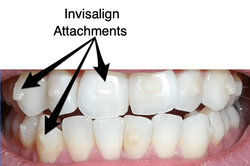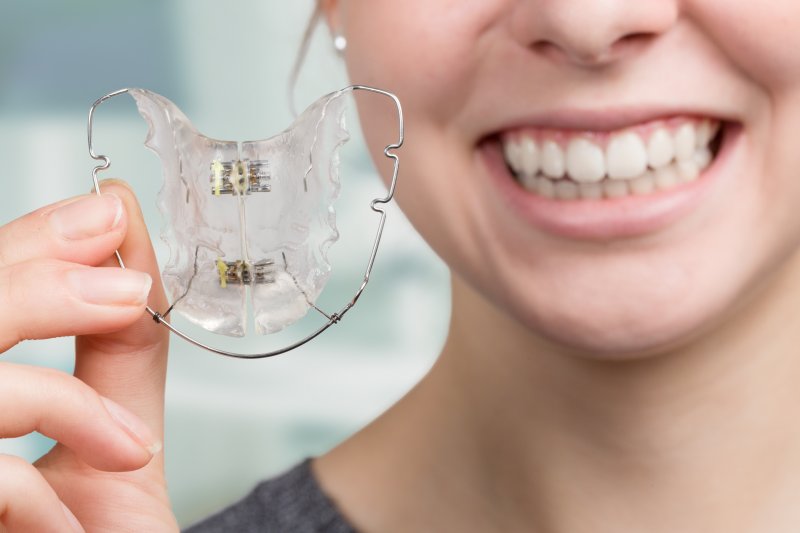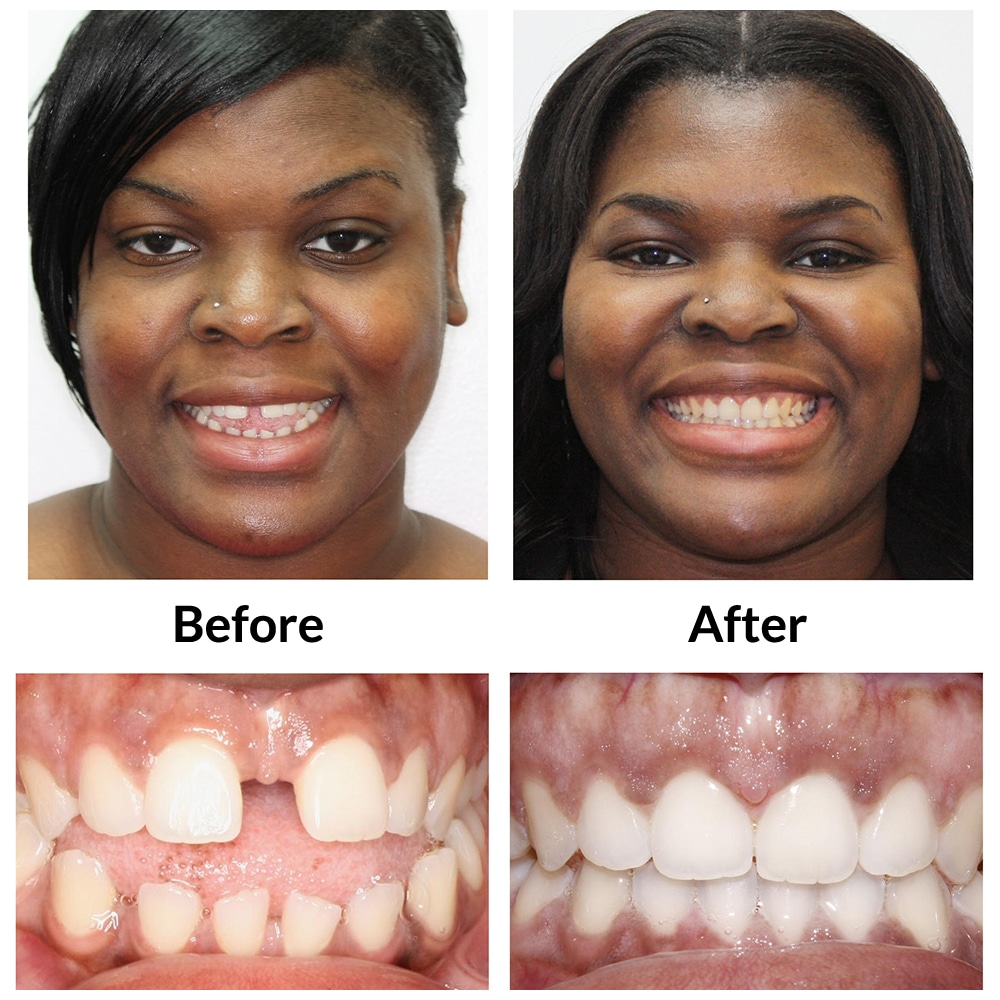Discover the Perks of Invisalign for a Perfect Smile Transformation
Discover the Perks of Invisalign for a Perfect Smile Transformation
Blog Article
Invisalign vs. Traditional Dental braces: Which Choice Is Right for You?
When taking into consideration orthodontic treatment, the selection between Invisalign and conventional dental braces offers several vital aspects that merit mindful examination. Invisalign provides a very discreet option with removable aligners, while conventional dental braces give a more noticeable yet reliable remedy for serious misalignment. Each alternative encompasses unique advantages and drawbacks associated with aesthetics, convenience, therapy period, and cost. Recognizing these nuances is essential for making an informed decision that straightens with your individual preferences and way of life. The concern remains: which option will best satisfy your orthodontic demands and expectations?
Introduction of Treatment Alternatives

On the other hand, conventional dental braces consist of metal braces and cords that are bound to the teeth. This approach applies constant pressure in time to attain alignment. While effective for intricate orthodontic concerns, typical braces need normal brows through for modifications and can position challenges in preserving oral hygiene because of the problem of cleansing around brackets and cables.
Both alternatives have their qualities, and the selection often depends upon particular oral conditions, lifestyle preferences, and client conformity. Ultimately, consulting an orthodontic expert is essential for identifying one of the most ideal treatment strategy tailored to individual requirements. Understanding the subtleties of each choice can dramatically influence the total success of orthodontic treatment.
Visual Factors To Consider
A significant variable affecting the choice between Invisalign and conventional dental braces is the visual allure each therapy offers. Invisalign aligners are crafted from clear plastic, making them essentially unnoticeable when used. This discreet look is particularly interesting adults and young adults who might feel awkward concerning their orthodontic treatment. The capacity to preserve a natural smile throughout the placement process can significantly improve the client's confidence in social and specialist settings.
In comparison, typical dental braces include steel brackets and cables, which can be a lot more noticeable. While improvements in orthodontic modern technology have resulted in the development of smaller brackets and tinted elastics, conventional braces still maintain a more noticeable profile. For some people, the presence of dental braces might prevent them from looking for needed treatment.
Inevitably, the selection between Invisalign and typical dental braces might hinge on individual choices concerning visual appeals. Patients who focus on discretion usually favor Invisalign, while those who are much less worried regarding exposure may choose traditional braces. Comprehending the visual effects of each option is essential for making a notified choice that aligns with one's lifestyle and preferences.
Convenience and Convenience

In regards to benefit, Invisalign aligners are detachable, enabling patients to enjoy their preferred foods without limitation and maintain optimal dental health. Cleaning and flossing are simplified, as the aligners can be gotten throughout these regimens, whereas traditional dental braces call for mindful steering around braces and wires.
In contrast, standard dental braces require regular adjustments, making them less convenient for those with active schedules. Generally, the convenience and comfort of Invisalign make it an appealing selection for lots of individuals looking for orthodontic treatment.
Therapy Duration and Effectiveness
While both Invisalign and typical dental braces are reliable in correcting oral misalignments, the period of navigate here treatment can differ significantly in between both alternatives. Normally, Invisalign therapy can take anywhere from 12 to 18 months, depending on the complexity of the instance. The clear aligners function by slowly changing teeth into their desired settings, and regular follow-ups with an orthodontist assistance ensure progression remains on track.
On the other hand, typical braces frequently require a longer commitment, typically ranging from 18 months to three years. This results from their fixed nature and using brackets and wires, which can be more effective for intricate instances and serious misalignments (Invisalign). The treatment effectiveness of conventional dental braces is well-documented, as they enable accurate changes and better control over tooth movement
Ultimately, the selection in between Invisalign and traditional braces might hinge on both the anticipated therapy period and the particular dental concerns at hand. Consulting with an orthodontist is crucial, as they can provide tailored referrals based upon specific needs, making certain the chosen approach aligns with wanted outcomes and timeframes.
Expense Contrast and Insurance Coverage Choices
Expense plays a considerable role in the decision-making process for people considering orthodontic therapy, whether choosing Invisalign or standard dental braces. Usually, the cost of Invisalign arrays from $3,000 to $8,000, while conventional braces generally cost in between $2,000 and $6,000. Elements influencing these costs include the intricacy of the instance, the period of therapy, and geographical place.
Numerous oral insurance policy plans give partial insurance coverage for orthodontic treatments, however the specifics can differ commonly. Typically, traditional braces may be a lot more regularly covered by insurance plans contrasted to Invisalign, which some insurance providers classify as a cosmetic procedure.
Additionally, numerous orthodontic practices offer adaptable layaway plan, making both therapy alternatives extra obtainable. Individuals should ask regarding prospective financing options and discount rates for ahead of time settlements. Assessing the total expense, including insurance coverage advantages and layaway plan, is important for making an educated choice that straightens with both aesthetic choices and budget plan factors to consider.

Conclusion
In summary, the selection in between Invisalign and conventional braces depends upon several variables, consisting of visual choices, comfort, therapy duration, and price. Invisalign supplies a discreet, removable choice that facilitates oral hygiene and dietary versatility, while standard dental braces may be better for intricate oral concerns and typically come with a lower rate factor. Ultimately, examination with an orthodontist is necessary to analyze private scenarios and determine the most suitable therapy alternative for accomplishing optimum dental placement.
When taking into consideration orthodontic therapy, the Go Here choice between Invisalign and traditional braces offers several vital aspects that warrant mindful examination.Comparing Invisalign and standard braces exposes unique treatment options for orthodontic modification.While both Invisalign and traditional dental braces are effective in correcting oral imbalances, the duration of treatment can vary substantially in between the two alternatives.Price plays a considerable duty in the decision-making process for individuals considering orthodontic treatment, whether choosing for Invisalign or learn this here now standard braces.In recap, the choice in between Invisalign and typical dental braces pivots on numerous factors, consisting of visual preferences, convenience, therapy duration, and cost.
Report this page